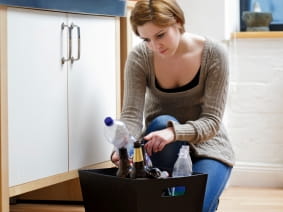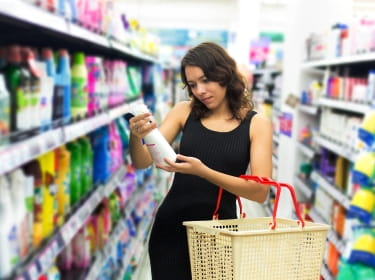Household Product Labels Useful But Not Reliable

The Bottom Line
Household product labels often contain the wrong information—or no information—about treating poisonings.

The Full Story
When it comes to first aid information, household product labels often don't tell you what you need to know. A new study shows that household product labels often give the wrong advice about poisoning. Sometimes, they give no advice at all.
A study published more than thirty years ago found the same problems. When it came to treating someone who swallowed a product, or got it in the eyes or on the skin, information was missing, misleading, or even totally wrong.
When the information about treating an emergency was there, it could be hard to find. First aid instructions - when provided - were in many different places: front, side, back, bottom, even under the label.
Emergency contact information was not consistent. Many labels provided no contact information at all. Some said to call a doctor or 911. Others said to call Poison Control. Yet others said to call the manufacturer.
The bottom line: household product labels are NOT good sources of first aid instructions. What should you do if someone is poisoned by a household product?
The best advice? Call Poison Control at 1-800-222-1222. The online tool was developed by Poison specialists will answer your call. This expert will be a nurse or pharmacist with special training in toxicology. A physician will be standing by. Poison Control will tell you exactly what to do, right then and there - 24 hours a day. Or, if you prefer guidance online, use the webPOISONCONTROL® tool, developed by Poison Control experts.
Rose Ann Gould Soloway, RN, BSN, MSEd, DABAT emerita
Clinical Toxicologist
Poisoned?
Call 1-800-222-1222 or
Prevention Tips
Call Poison Control at 1-800-222-1222 for correct information about treating a poisoning.
This Really Happened
A 14-year-old boy told his parents that he may have swallowed some kind of pill. The parents tried to make him vomit by giving salt water, an outdated treatment recommendation found on a number of product labels. They gave their son salt water. The boy had many complications of sodium overdose, including seizures and coma, before he died.
References
Poisoned?
Call 1-800-222-1222 or
Prevention Tips
Call Poison Control at 1-800-222-1222 for correct information about treating a poisoning.
This Really Happened
A 14-year-old boy told his parents that he may have swallowed some kind of pill. The parents tried to make him vomit by giving salt water, an outdated treatment recommendation found on a number of product labels. They gave their son salt water. The boy had many complications of sodium overdose, including seizures and coma, before he died.
